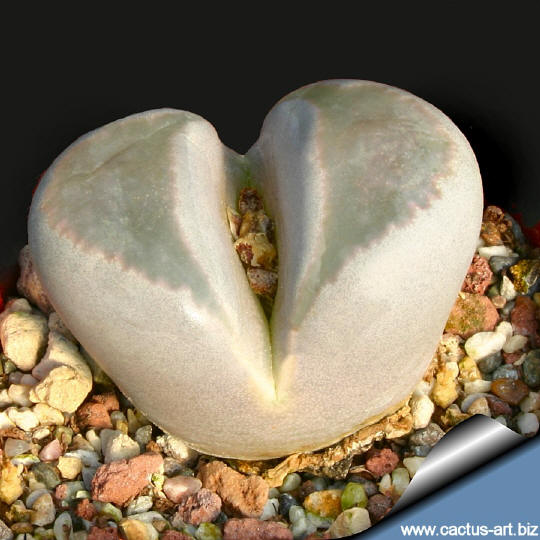|
|
|

Lithops optica C286
Many plants have pink hues.
These plants so
closely resemble the surrounding pebbles of their natural habitat,
either in coloration or shape or both. This
camouflage allows them to escape detection and is a very effective
strategy for escaping
predation. |
|
Advertising
|
|
|
|
Family: Mesebrianthemaceae (Aizoaceae)
Habitat: Lithops optica is
endemic to the Lüderitz district of the southern Namib
Desert where it grows on the coastal plains. Its habitat is very
sandy and it is often found growing among rocks and gravel where it
is very difficult to spot. Its
climate is cool due to the cold Atlantic Ocean and frequent
fog, and
rainfall is mainly during the
winter, ranging between 20-50 mm per annum.
|
|
|
|
Description: Consists of an oblong
obconical almost club-shaped leaf pair up to 20 mm long. The leaf pairs
are often unequal, rounded-truncate at their tops and up to 15 x 12 mm
in diameter with a smooth texture, deeply fissured and whitish grey to
grey green in colour. The bodies become wrinkled during the dry summers.
They divide with age forming small clusters of up to 10 bodies. It is
possible to estimate the age of a Lithops optica colony by counting the
dried-up shells of old bodies, and specimens have been found with ages
estimated at 50 to 95 years or more. The flowers are white, sometimes
with pink tips, 12-20 mm in diameter and appear during autumn.
|
|


|
|